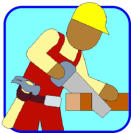



As far as possible, always cooperate with others, and groups working
around you, to try to improve the health and safety of your workplace
Everyone should aim to have surroundings that are free of injuries, ill health and loss. You can help to do this by looking out for, and obeying safety signs; and by keeping the area where you are working in a tidy and safe condition. If you are working in an area that is still being used by the other people, whether they are members of the public, fellow workers of the occupiers of the premises where you are working, then you must take measures to protect them. Erecting suitable and adequate warning notices and/or barriers is the best way of doing this. It is important that you don’t undertake any task that may be a risk to yourself, or to others, unless you are sufficiently trained how to do it. Once you are trained you should be able to satisfy an experienced person that you are able to carry out the work safely and efficiently. Where a risk assessment and/or method statement is provided for a work activity, you must make sure that you fully understand it and can comply with its requirements. If this is not the case, and you feel that additional workplace precautions are required to carry out the activity safely, then you must raise your concerns immediately with your supervisor. Remember that many substances are hazardous to health when they are transferred from your hands onto food, cigarettes, etc. and so taken into your body. To avoid this, always wash you hands before eating, drinking and smoking and before using the toilet. Read the Risk and COSHH Assessment/s that apply to your work and make sure that you understand how the work is to be done. Following the information in these documents and the safe working guidance on this website will help you to look after your safety, as well as the safety of others around you. Additionally, this guidance will help you to meet your legal obligations on health and safety at work and the environment.The Workplace (Health, Safety and Welfare) Regulations, deal with a
number of issues including cleanliness and waste materials
The main points are that workplaces should be kept “sufficiently clean” and that “so far as is reasonably practicable, waste materials shall not be allowed to accumulate in a workplace except in suitable receptacles”. Poor housekeeping results in untidy, overcrowded and obstructed workplaces, and workplaces which are unhygienic or dirty. It also creates hazards for you and for other people and the results of poor housekeeping are often a causal factor in many incidents. Do not create hazards for other people by working in ways, which result in a workplace that is untidy, overcrowded or obstructed. This is particularly important where: • slipping or tripping hazards could result in someone falling; • fire exit routes or fire doors become obstructed. Similarly, do not create hazards for other people by working in ways that result in an unhygienic or dirty workplace. This is particularly important where: • there is a risk of infection; • substances are being used which are harmful to health. Finally, report poor housekeeping whenever you find it, especially if you have not been able to do anything about removing the hazard.Keep work, stores and mess areas in a clean, tidy and safe condition
Remove rubbish to an agreed position. Combustible materials and rubbish are a fire hazard if they are not stored correctly or moved from the workplace.Always:
• keep all gangways, aisles and stairways clear; • keep access to stores areas clear; • tie up, or protect, trailing leads; • make sure that rubbish is not left lying about, by cleaning up off-cuts, packing materials, etc as the work progresses – do not allow rubbish to accumulate; • wipe up spilt oil, grease or liquids from floors, and dispose of them safely; • establish a refuse disposal point in the work area where the waste can be stored safely and where contamination of drains or land will not occur; • stack and store materials / substances correctly, so that there is no risk of contamination if there is a spillage; • check that there is a fully charged fire extinguisher near by in case of fire. Look after the environment by managing waste in your work area and making sure that the correct waste procedures are followed. You can help by keeping your work area tidy. Different types of waste should be separated, and disposed of in accordance with the workplace rules. Do not discharge any chemicals or substances down the drains without first checking the correct disposal procedure for them.Many work activities can create potential hazards for other people
around you - trailing leads, wet and slippery floors,
etc.
To avoid exposing people to unnecessary risks make sure that you always display warning signs before you commence such activities.Remember:
• always place your signs at the points where people are likely to walk into your work area, before you start the work; • make sure that the signs can be clearly seen from all the possible entrances into the work area; • corridors often have many doors opening onto them; remember these entrances also need to have a visible warning sign close by; • when working in stairwells, only work on one flight of stairs at a time, so as to keep the staircase as free as possible. DO NOT remove any signs until there is no longer a hazard from your work.Some types of work have special risks
Working in a confined space is an obvious example, as there is a risk of death through a lack of oxygen, by poisoning, or due to an explosion or a fire occurring. Likewise people working alone face particular risks, which have to be controlled by making sure that their supervisor knows where they will be working and how long the work is expect to take; as do people working at a height, or handing hazardous chemicals, all of which need to be controlled. Anyone who has to deal with cleaning up body fluids, such as blood from an accident, or removing a syringe that may be contaminated, faces special risks which need to be minimised. Additionally, anyone who has come in contact with water or sewerage that may be contaminated with urine from affected rats may be at risk from Weil's disease.The Management of Health and Safety at Work Regulations, and other more specific regu-
lations, impose a specific duty to carry out a suitable and sufficient assessment of all risks
to the health and safety of employees and others, arising at or from these and other work
activities.
It is important that an adequate risk assessment is made of any activity
that may involve ‘lone working’ and that ample workplace precautions
are put into place
Lone workers are those who work by themselves without close or direct supervision, they may be in a fixed establishments, or be mobile workers working away from their fixed base; however wherever they are, they should not be put at more risk than other employees. Solitary workers face particular problems. If a person has to work alone, it is essential that they tell their direct supervisor where they will be working and how long they expect their work to take. When they have finished the work, they must tell their supervisor so that they know that they are safe. Additionally, if working in an office or workshop in another business's premises, then advise the someone that they are on site when you arrive; and • make sure that they know where they will be working; • tell them the expected time of leaving; • check the emergency arrangements for the site,; and • tell the same person that they have finished before leaving site. When working alone, no one must expose themselves to more risks than they would if they were working with others, and must only handle substances and goods that can be safely handled by one person. People working alone make sure there is safe access and exit to and from the workplace, and know the location of fire fighting equipment, first aid equipment and how to escape from the area they are working in an emergency. Modern technology is overcoming some of the problems associated with lone working by providing remotely monitored ‘man-down’ and ‘no-response’ systems. Businesses now offer GPS location tracking and reporting with automated check-in systems, which call lone workers on their mobile phone, or other wireless communication device, at predetermined intervals that are set by the worker over the phone.Working at heights is inherently dangerous, particularly if both hands
are required to do a job
A fall doesn't have to be from a much of a height to kill or injure someone; a fall of less than 2 metres is sometimes enough. The Work at Height Regulations require an assessment to be undertaken before starting any work at height. If this confirms that there is no alternative to working at height, then suitable work equipment should be selected, taking into account the nature of the work.There is a simple hierarchy for managing and selecting equipment for
work at height, which those organising work must apply. This is:
• avoid work at height where ever possible; • use work equipment or other measures to prevent falls, where working at height cannot be avoided ; and • where the risk of a fall cannot be eliminated, use work equipment or other measures, to minimise the distance and consequences of a fall should one occur. Where used, access equipment must be set up on a firm even surface, away from overhead and wall-mounted power cables. Before starting work, adequate precautions must be taken to protect and safeguard anyone below. Where the equipment that is being used causes an obstruction, then warning signs and barriers should be set up. Do not work off any form of access equipment near an open landing, window, of leading edge, unless precautions have been taken to prevent anyone from falling over or through it. Always keep an eye on the weather conditions whilst working outdoors, for example if high winds are present it may make the ladder or working platform unsafe, in these conditions no one must attempt to work at a height. Permission may be needed from the site owner, Local Authority and/or police before the erection of scaffolding and/or towers. Where the equipment causes an obstruction, warning signs and lighting may have to be provided and maintained.You need to protect yourself from a number of risks that may affect
your future health
Your body - it is good practice to wear protective clothing while you work, rather than your day-to-day clothes, as any chemical split on them could harm you, if left in contact with the skin for a long time. However, you do need to keep protective clothing clean so it is free from chemicals, grease, etc. Do not use clothing that is ripped as this could snag or get caught in machinery. If sitting for long periods, then sit up with your back straight and your shoulders back, and with your buttocks touching the back of the chair. If possible, keep your knees even with, or slightly higher than your hips, and your feet flat on the floor. When using a display screen equipment always adopt a good posture to avoid fatigue, aches and pains. Your hands are easily damaged by sharp and rough edges, chemicals or by cold or hot objects, so it is important that you use protective gloves to overcome these hazards. You may need to change the type of glove for different activities i.e. rubber gloves will not protect you from hot objects, but will guard against chemicals. Look after your hands by using your gloves, otherwise you may suffer from dermatitis and loose the flexibility of your fingers. Your eyesight is irreplaceable, so make sure that you always wear appropriate eye protection if there is a risk to your eyesight. This may be in the form of safety glasses, goggles, or a full-face mask, depending on the risk. If using a display screen make sure that it is set up correctly to avoid eye strain. Your hearing is valuable to you, but if you are subject to very loud noises or loud noise over a period, your hearing may be damaged, so use hearing protection when it is needed. Your head - where there is a foreseeable risk of head injury, either due to materials falling, or by striking your head against another object, you must wear head protection. Normally, it is mandatory to do so on a construction site or in any area that is designated as a ‘hard hat area’.You are responsible for looking after and taking reasonable care of items of your personal
protective equipment, by keeping them in a clean and serviceable condition. You must re-
port any loss or obvious defects as soon as possible.
To avoid back injuries use mechanical lifting and handling equipment
wherever possible
A back injury once sustained frequently causes permanent weakness. Where it is not possible to avoid heavy handling the following simple rules can prevent years of suffering: • If the load is too awkward or too heavy - GET HELP • If mechanical aids are available, such as a sack truck or a trolley, USE THEM to move the load, providing of course, that you have been instructed in their safe use • Wear suitable footwear • Check in advance, there is adequate room to lift the load, a clear path is available to the destination and there is adequate room for putting it down • If a close approach to the load is not possible, try to slide it towards you before attempting to lift it • Check for sharp edges - wear protective gloves if necessary • Try to keep the load close to the waist, with the heaviest side of the load next to, and as close to, the body as long as possibleYou are particularly at risk when lifting a heavy object
and/or when moving items from one place to another.
Follow these guidelines when you move things:
• don't work above the maximum height that you can reach; • if you need to lift something down or up that is above head height, use a stepladder or working platform - don't climb on other objects; • ask somebody to help you if necessary; • store large or heavy items on the floor.Inappropriate use of display screens can cause fatigue, aches and
pains
Display screen equipment (DSE) is used in many places; such as offices, manufacturing, laboratories, and on precision machines to show their current performance. In such instances, the Health and Safety (Display Screen Equipment) Regulations apply to people at work who regularly use DSE as a significant part of their normal work i.e. daily, for continuous periods of an hour or more. The incorrect use of display screens, keyboards and mouse pointer may cause eye strain, upper limb problems and backache; so if you get aches and pains whilst using them, follow the guidance below. Ideally you should be able to sit, or stand, at the edge of the place where you use the screen, without twisting or over stretching, or repositioning the keyboard, mouse etc.; and if seated, have enough space under the workstation for comfort. Position the screen to avoid prolonged or repetitive tilting of your neck. Your eyes should be roughly the same height as the top of the screen. Also check that the screen characters are clear, readable and flicker free, with a text size that is comfortable for you. If glare and reflections are a problem, tilt or reposition the screen, and if required close blinds to reduce daylight levels. If seated, use a chair that has a variable height and back, can swivel, and preferably has casters or gliders. Sit in the back of the chair with its back vertical, and the backrest set so that your lower back is supported; and so there is a narrow space between the front edge of the chair and back of your knees. Make sure that when typing, your forearms and hands are horizontal when your fingers are touching the middle row of letters on the keyboard. Do not rest your wrists on the worktop when typing, as this will make you bend your wrist awkwardly.Ensure that you take regular breaks from DSE work, such as carrying out a different type of
task for a short while, as prolonged use can cause visual fatigue.
Laptops are not designed for intensive or prolonged use, as it’s not usually possible to do so with a good posture. For this reason, they should not be used for long spells without additional equipment, such as a laptop stand or docking station, and a full sized keyboard and a mouse.Your hearing is valuable to you, however if you are subject to loud
noises, your hearing may be damaged
This damage may be short term and your hearing can recover, but if the noise is very loud or occurs over a considerable period, your may not fully recover your hearing. If you are in a noisy area where two people standing 2 metres (6ft 6ins) apart would have difficulty in hearing each other speaking in a normal voice, or have to shout to be heard; or if you are using noisy powered tools or machinery for more than half an hour each day, then your hearing could be damaged. You should use suitable ear protection in these circumstances. Some work areas may be designated as “hearing protection zones” and be marked with signs. You must use hearing protection when working in, or entering the zone – failure to do so, will damage your hearing. Items of plant and equipment that may damage your hearing are generally marked to show that hearing protection should be worn when near them, or while using them. Although not marked, some hand held power tools may be very loud if they are used near your ear, drilling near your head, for example. Follow the 2 metre rule given above, if people have to shout to make you hear, use ear protection. People often experience temporary deafness after leaving a noisy place. Although hearing recovers within a few hours, this should not be ignored. It is a sign that if you continue to be exposed to the noise, your hearing could be permanently damaged. Permanent hearing damage can also be caused immediately by sudden, extremely loud, explosive noises, e.g. from guns or cartridge-operated machines; but hearing loss is usually gradual because of prolonged exposure to noise. Remember, simple things like switching off machines when they are not in use, and checking all bolts, fixings, removable covers, etc are kept tight to prevent vibration and rattling noises, all help to keep noise levels down.If hands and/or arms are regularly exposed to high levels of vibration
they may suffer from several kinds of injury, including impaired blood
circulation and damage to the nerves and muscles
Collectively these injuries are known as “hand-arm vibration syndrome” (HAVS), though other names are sometimes used, including “dead finger”, “dead hand” or “vibration white finger”. The first signs of vibration injury are a tingling sensation or ‘pins and needles’ in the fingers. This is most noticeable at the end of the working day and may be accompanied by numbness. If this is experienced after 5 to 10 minutes of continuously operating a machine or power tool, you must stop what you are doing and seek further guidance before continuing. HAVS is preventable, but once the damage is done it is permanent. Wherever possible, take the following steps to reduce the likelihood of hand-arm vibration happening: • make sure that tools are correctly maintained and free of loose parts; • select the right tool for the task and use tools that are designed to reduce vibration – for example those with anti-vibration mountings or with vibration-isolating handles; • reduce the grip, pushing and pulling forces that are applied while using tools; • avoid long periods of uninterrupted vibration exposure; • use padded gloves that are intended to provide a level of vibration-isolation; • make sure that your hands are kept warm to maintain a good flow of blood in the fingers – particularly in cold weather.Remember, the most efficient and effective way of controlling exposure to hand-arm vibra-
tion is to look for new or alternative work methods, which eliminate or reduce exposure to
vibration.
‘Sharps’ is a general term applied to hypodermic needles, razor blades
or other similar items that could easily penetrate the skin
For your own safety, you must not try to deal with ‘sharps’ unless you have been properly trained to do so. Remember: • Dangerously discarded used needles and syringes may be hidden in crevices and on ledges. Never stick your hand into these types of places. Check with a tool for the presence of ‘sharps’. • Don’t put your hands into, or press down on rubbish bags and similar containers, as they may contain discarded ‘sharps’. • Treat all discarded needles and similar items as being potentially infected. If you discover a used hypodermic needle, syringe, or other used medical utensil – DO NOT TOUCH IT - keep everyone away and sweep it into a dustpan. If available, empty the dustpan into a ‘sharps’ disposal box (or a safe sealable container). If the ‘sharp’ is in a difficult location and it has to be picked up, then use large plastic tweezers, or something similar, and wear rubber gloves. Needles should only be picked up by the barrel. NEVER pick up a needle by the point because it may penetrate both gloves and skin. ALWAYS take the Sharps Box to the site of the discarded needle – NEVER attempt to carry the ‘sharp’ to the box. When the ‘sharp’ is in the ‘Sharps Box’ put the tweezers in as well. Never dispose of a ‘sharp’ in a way that puts others at risk. Wash the gloves in hot soapy water before reusing them.‘Sharps’ may be carrying infectious diseases – if you pierce your skin with one, let it bleed
and obtain immediate medical advice. You must record the incident in the Accident Book.
Weil's disease (medical name leptospirosis) can be contracted by com-
ing in contact with water or sewerage that is contaminated with urine
from affected rats
Another form is contagious from cattle, and less commonly pigs and sheep. The microbe responsible for the disease usually enters the body through unprotected cuts and scratches. If you need to work, or intend to take part in leisure activities such as canoeing, boating or swimming, in areas where you may be exposed to this danger, i.e., areas where rats are likely to have been or be encountered, then reduce the risk by: • cleaning; disinfecting and covering cuts, scratches and abrasions with waterproof adhesive dressings before you start work in the area; • wearing protective clothing including rubber gloves and boots while undertaking the work; • washing your hands and forearms after you have finished the work and before eating, drinking and smoking. If anyone has been working in an area where they may have contacted Weil’s disease and they develop flu-like symptoms, advise them to consult a doctor immediately. The early signs of Weil's disease are fever, headache and chill - very similar to influenza.Everyone has an important part to play in making sure that waste is
properly stored and disposed of
Additionally, everyone should be a 'good neighbour', by minimising potential harm to the environment through reducing the amount of waste going to landfill; by decreasing CO2 emissions as a result of lessening the consumption of water, electricity and gas; and by re-using and recycling materials effectively. The Environmental Protection Act; Environmental Protection (Duty of Care) Regulations and the Special Waste Regulations impose strict duties on all those who produce, keep, carry or dispose of Controlled or Special Waste. Controlled Waste is all waste from industrial, commercial and domestic premise. All work inevitably produces potential environmental hazards and waste in one form or another. However, leftover materials that are to be reused elsewhere, are not classed as waste. Special Waste includes larger quantities of substances / materials, which have hazard warning symbols or are accompanied by a safety date sheet. Special Waste must not be mixed with other waste. Make sure that redundant materials, scrap items, general waste and surplus substances, which are temporarily stored, do not cause pollution. Substances that may, if they leaked or were spilled, contaminate the ground or water resources, must be properly stored. Make sure that everyone knows what to do if there is a leak or a spillage. Everyone has a responsibility to make sure that controlled and special waste is: • kept safely while under their control; • adequately described on the waste carrier’s transfer note, and is clearly labelled so that it can be handled and treated properly; • only transferred to, or disposed of by, a registered person or company. Companies that transport controlled waste must be registered with a local Waste Regulation Authority as a 'carrier'. It is illegal to carry waste in unregistered vehicles.
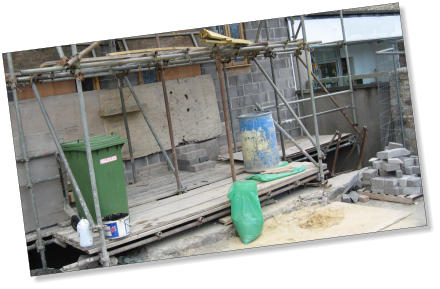
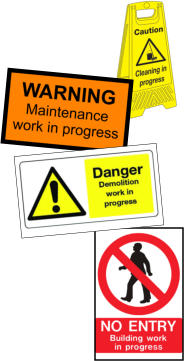

When lifting do
it this way


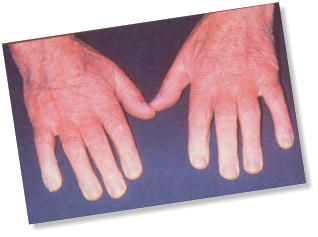










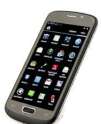






Workplace
precautions


